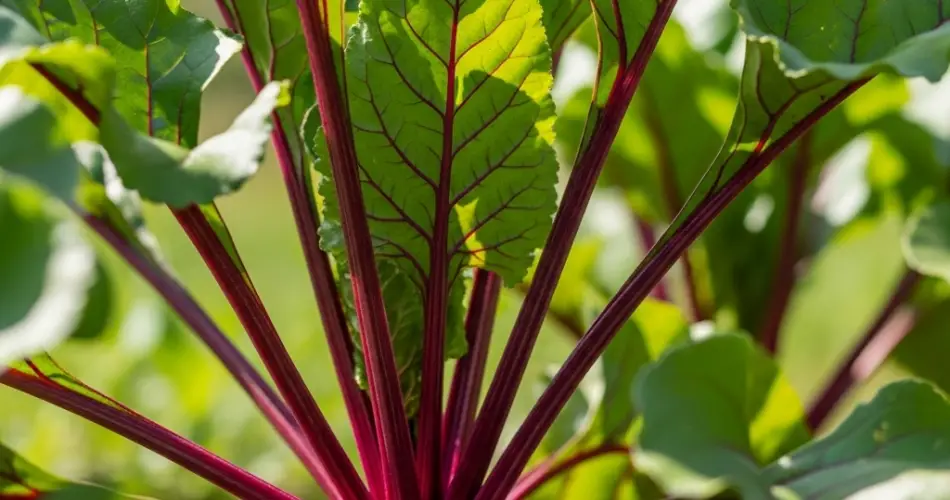Beets are enjoying a well-deserved moment in the spotlight. Once considered a humble root vegetable, beets are now recognized as a nutritional powerhouse and a versatile ingredient in both sweet and savory dishes. From their earthy flavor and vibrant color to their impressive health benefits, beets offer something special at every stage—from root to leafy top.
A Nutritional Gem in Nature’s Pantry
Beets are rich in essential nutrients while being low in calories. One cup of cooked beets contains around 60 calories, yet provides a generous amount of folate, manganese, potassium, iron, and vitamin C. Folate is especially important for cell function and tissue growth, making beets a smart choice for overall wellness.
Beets are also a great source of dietary nitrates—naturally occurring compounds that convert to nitric oxide in the body. Nitric oxide helps widen blood vessels, improving blood flow and supporting heart health and physical performance.
Heart and Brain Benefits
Regular beet consumption has been linked to lower blood pressure, thanks to the vasodilating effects of nitrates. Improved circulation also benefits the brain, potentially enhancing cognitive function and reducing the risk of age-related decline. Some studies suggest beet juice may even help improve endurance in athletes and reduce oxygen use during exercise.
The betalains—pigments responsible for the deep red and purple hues of beets—are known for their antioxidant and anti-inflammatory properties. These compounds help fight free radicals and reduce oxidative stress, which can support long-term heart and brain health.
Supporting Liver Health and Detox
Beets contain betaine, a compound that aids liver function and detoxification. Betaine supports the liver’s ability to break down fats and process waste, making beets a gentle, natural way to help your body cleanse itself. The fiber in beets also supports digestion and regular elimination, further contributing to detox benefits.
Root to Leaf: No Waste, All Flavor
One of the best things about beets is that every part of the plant is edible. While the root is often the star, the leafy greens are just as nutritious—packed with vitamins A, C, and K, as well as calcium and iron. Beet greens can be used similarly to spinach or Swiss chard. Sauté them with garlic and olive oil, toss them into soups, or blend them into smoothies for a vitamin boost.
The root itself can be enjoyed in countless ways. Beets can be roasted, boiled, steamed, grated raw, or even pickled. Their natural sweetness makes them a surprising addition to baked goods, such as muffins and brownies, where they provide moisture and a subtle earthy flavor.
Easy Ways to Enjoy Beets
Beets are as flexible in the kitchen as they are nutritious. Here are a few ideas to get the most out of them:
-
Roasted Beets: Cut into chunks, toss with olive oil, salt, and herbs, and roast until tender. Roasting enhances their natural sweetness.
-
Beet Salad: Slice or grate raw beets into salads for color and crunch. Pair with goat cheese, arugula, and walnuts for a classic combination.
-
Beet Juice or Smoothie: Blend beets with apples, carrots, or citrus fruits for a refreshing and energizing drink.
-
Pickled Beets: Quick-pickle beet slices in vinegar, sugar, and spices for a tangy side or sandwich topping.
-
Beet Soup: Use cooked beets as the base for borscht, a traditional Eastern European soup that’s both comforting and nutritious.
-
Beet Chips: Thinly slice beets, toss in oil, and bake until crisp for a healthy snack.
Buying, Storing, and Prepping Tips
When choosing beets, look for firm, smooth bulbs with deep color and fresh-looking greens. Smaller beets tend to be more tender and sweeter than larger ones. If the greens are attached, remove them soon after purchase to prevent moisture loss from the root. Store the roots in the refrigerator, where they can last for several weeks.
To reduce staining from beet juice, wear gloves or coat your hands with lemon juice before peeling or cutting. Beet juice can stain cutting boards and countertops, so consider using a non-porous surface.
Growing Beets at Home
Beets are a great crop for home gardeners, especially in cooler months. They grow best in loose, well-drained soil and need consistent moisture to develop properly. Plant seeds directly into the ground and thin the seedlings to allow space for the roots to grow. In about 50 to 70 days, you’ll have fully mature beets ready for harvest. As a bonus, you can begin harvesting the tender greens much earlier.
The Sweet, Earthy Joy of Beets
Beets bring color, flavor, and vitality to the plate. From supporting heart and brain health to enhancing athletic performance and liver function, they truly earn their place in a health-conscious kitchen. Whether you roast them, juice them, or enjoy their leafy tops, beets are a shining example of how delicious and nutritious whole foods can be.
With just a little preparation, you can turn this earthy root into a vibrant dish that nourishes body and soul—root to table.



